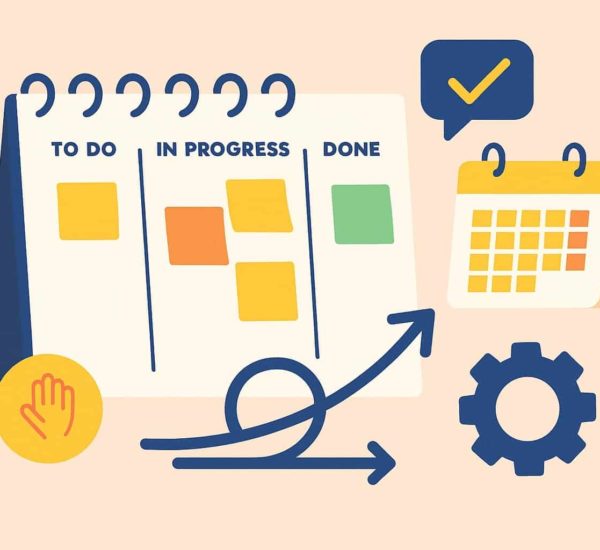Performance reviews can seem like complex processes that take too much time for both managers and employees. But they serve the important benefit of looking back at what went wrong, right, and everything in between.
In this blog, we’ll take you through the benefits of performance reviews, the different methods used and some templates and phrases to help you get through one unscathed.
What is a Performance Review?
Employee performance evaluation or review is a formal assessment of various parameters concerning their performance at their workspace. Usually, the managers or supervisors evaluate the performances. In these reviews, managers evaluate performance, understand their strengths and weaknesses, peer performance, and whether they are facing any issues with the team, and ask them about their experience working with their manager or supervisor.
Traditionally, performance reviews were conducted as an annual review to score or grade employees and disburse bonuses. More and more organizations are realizing the importance of feedback loops, and have started conducting these as regular one-to-one meetings. Previously, there used to be a standard performance review template and metrics across the whole organization, and performance reviews were more of an obligatory factor rather than something aimed at productivity.
Today, a performance review is becoming more regular, personalized, employer-driven, and very successful and engaging activity organizations are keenly adopting. Performance reviews are important for the growth and productivity of any organization, and thus, need proper processes.
The Ideal Frequency of Performance Evaluation
There are many types of performance reviews. Traditionally, it was all about annual reviews, and a review was between the manager and the employee. But currently, organizations are focusing on the performance overview of employees at different levels to improve productivity.
Thus, there can be performance reviews in the following frequencies:
- Biweekly
- Quarterly
- Half-Yearly
- Annual
The frequency depends primarily on the organization’s priorities, type of business model, and competitor strategy.
How to Write Performance Reviews?
There are standard templates that an organization follows across all levels of employees. Both managers or supervisors (the evaluator) and the employee (self-evaluation forms)must fill the performance review file. Documentation of this kind enhances future sessions and helps the organization track the progress of the employee and the manager.
Many organizations have standardized self-evaluation forms. The employee writes about their experience, achievements, and other metrics from a personal perspective and rates themselves. The self-evaluation form typically includes a ‘personal achievements’ column to provide encouragement and motivation.
Managers or supervisors write out their employee reviews, which typically include an assessment based on the output, team performance, and other factors. They also provide ratings in the performance review document. The use of appropriate phrases that motivate and encourage the employee is very critical to this process.
Common Performance Evaluation Phrases
One very important component of performance reviews is documenting them well. Sometimes, when you are approaching the deadline, it becomes a hassle to communicate your review effectively. We have listed down some common performance evaluation phrases which might be helpful for your next review.
Planning and Communication Related Performance Review Phrases
- “Always meets the deadlines and delivers high-quality work.”
- “Develops flexible and workable plans to meet the requirements of the organization.”
- “Excels in formulating and implementing business strategies and action plans.”
- “Drives a given project to successful execution.”
- “Extremely organized and structured approach in planning and communication of a particular task.”
Innovative Problem Solving Approach Related Performance Review Phrases
- “Creative and structured in approach.”
- “Always brings out new and out-of-the-box solutions.”
- “Easily adapts to the changing requirements of the team whenever necessary.”
- “Has demonstrated immense ability and mastery in solving critical problems that matter to the company.”
Team Building-Related Performance Review Phrases
- “Creates a happy and healthy environment around them where the team is comfortable in sharing opinions and ideas.”
- “Great leadership skills, and shows consistent effort to lead.”
- “Has shown effective collaboration with the team and brought synergies together.”
- “Needs some assistance in managing teams.”
- “Flexible about receiving constructive criticism and guidance.”
- “Constantly adheres to and promotes the organization’s culture among peers.”
Ability to Think on Their Feet Related Performance Review Phrases
- “Adapts quickly to the changing procedures, methods, and instructions.”
- “Always at the front of new learning opportunities. Committed towards continuous learning.”
- “Constantly promotes learning culture, and shares their experiences with the team.”
Improvement and Promotion Related Performance Review Phrases
- “Has shown distinguished performance abilities by handling multiple projects effectively.”
- “Is constantly pushing himself/herself to learn, adapt, and increase their potential to advance.”
- “Earned the ticket to promotion through consistently exceeding performance goals.”
- “Proved the team that they are is capable of much more responsibilities.”
These are some sample performance review phrases that can get you started. Based on the context, employee, and the data you work with, these can act as templates when you document your performance review updates.
Methods of Performance Appraisal
The employee evaluation process is critical to boost productivity and improve outcomes exponentially. Usually, a predetermined set of goals and objectives is defined, which acts as a reference for the performance appraisal process. Different organizations follow various performance evaluation methods.
It is very critical to revamp the existing ineffective and redundant methods or processes and start adopting performance review methods that will not only positively impact the company’s output but will also boost employee morale and productivity.
360-Degree Review Process
The 360-degree review method is a multidimensional feedback process of employee reviews that helps the evaluator evaluate an employee in an unbiased way. Multidimensionality here covers feedback from the employee themself (self-evaluation), their manager, their peers, clients (if applicable), customers (if applicable), and their work and other reports. This method is known to be unbiased and offers a very clear understanding of the employee’s strengths, weaknesses, and overall competence.
A self-appraisal form is to be filled by the employee where they mention their areas of concern, strengths, manager and peer review, and any other element which the employer deems necessary. Having a clear format and template for self-appraisal ratings is necessary to avoid biased and fickle responses.
The client/customer reviews are feedback from stakeholders, who can be internal customers or external ones who interact with this individual. These reviews are very critical since they are usually unbiased and raw. Peer reviews can sometimes be biased. However, these are extremely important to evaluate the employee’s team bonding and coordination skills. Since the employee spends most of the time working with the team, this part of the review contributes significantly to employee reviews.
This method increases the employee’s awareness of their performance and its impact on the team and other business stakeholders. This multidimensional process encourages managers to initiate more career-related activities and also motivates employees to invest time to improve productivity and collaboration. This method usually works better for private organizations.

Management by Objectives (MBO) Method
As the term suggests, Management by Objectives is a process where the objectives for a particular period are defined between the manager and the employee. Firstly, the period for the appraisal process has to be defined, following which the employee and the manager should sit together to identify the performance review goals and objectives, and the key metrics for that specific period. At the end of the quarter or the appraisal period, employees are evaluated based on their progress on these objectives.
This performance appraisal method is usually more aligned towards specific, tangible goals and metrics to evaluate the employee, rather than the intangible aspects. It follows a three-pronged approach of planning, monitoring, and reviewing for conducting the employee reviews. This process has to be aligned with the overall organizational level. Since it involves less focus on the interpersonal skills and other collaboration and team-building aspects of the employee, this method is usually ideal for leadership and senior management evaluation.
The senior management (managers, senior managers, directors) need to have at least 5 actionable and measurable goals. The goals are to be properly documented and finalized. Each objective should follow a clear description, plan, and measurable tasks to achieve and accomplish it. Defining the key performance indicators and progress monitoring metrics is extremely critical. Last but not least, these goals should be coordinated with the overall organizational goals.
For example, Walmart uses this method to evaluate the performance of its leadership and senior management.

Behaviourally Anchored Rating Scale (BARS) Method
Unlike the previous method, this method evaluates both qualitative and quantitative aspects of performance reviews. The Behaviourally Anchored Rating Scale is a predetermined yardstick against which an employee’s performance is compared and evaluated. Common workplace behavior indicates typical and critical incidence that form the basis of the BAR scale. Once you have a standard list of behavioral instances, these can be customized based on the needs of the organization.
This method normalizes and builds a typical format of standard parameters to assess the performance of the entire organization, from entry-level employees to directors. The advantages of using this method are consistency across the organization and very few biased cases. This process also ensures accuracy in the performance reviews. But there is a high risk of subjectivity, and it’s very difficult to make increments and promotion-level decisions using the evaluation metrics. It is usually time-intensive, from ideation to implementation.
Psychological Appraisal Method
This is very different from the methods seen earlier, as this method focuses on evaluating the employee’s future performance, and not their past performance. Qualified psychologists assess the employees by conducting various tests, which cover leadership skills, cognitive abilities, interpersonal skills, and emotional quotient. This process is a great way to understand the employee’s potential, along with their performance abilities.
Although these analyses employees effectively, it is a relatively slow and complex process. Moreover, the results might be highly skewed, based on the psychologist who is performing the evaluation. However, this is one method that offers introverted individuals a stage to open up and prove themselves. Procter & Gamble is one company that uses this method to evaluate its employees’ performance.
Apart from the strategies mentioned above, several modern performance evaluation methods are also adopted by different organizations, based on their requirements and focus. They include the HR (cost) Accounting method, Assessment Center Process method, the Subordinates Appraising Manager (SAM) method, and the Critical Incident method. You should explore these methods and incorporate the best practices based on your organization’s unique requirements.
Employee Performance Reviews Examples
Here are some performance review examples for you to get an idea about how these performance reviews occur in different settings. Employees experience these performance reviews differently at different levels in the organization. There are many ways you can conduct these.
Manager and a New Employee Performance Review Example
Overall Rating (out of 10): 7/10
Self-Review Rating by the Employee: 8.5/10
General Assessment:
Overall, your performance was good in this quarter. You have surprised us by surpassing our expectations and achieving the goals mapped in your roadmap. Let’s grow together. I have listed down some of the areas to focus on for the next quarter.
Strengths:
- Time management and team-building skills.
- A creative and structured approach to problem statements.
- Out-of-the-box ideas.
- Always meeting the deadlines and delivering quality work.
- Communicates with the team and brings out the best in them.
Areas of Focus:
- Need to be more flexible in approaching a problem statement.
- Needs to be a bit more hands-on.
- Need to focus on developing domain knowledge.
Director and Manager Due for Promotion Performance Review Example
Overall Rating (out of 10): 8.5/10
Self-Review Rating by the Manager: 9.5/10
General Assessment:
Has mastered the role of a manager. Leads the team and directs them in the right way; a key contributor to the organization. Mentioned below are some strengths and areas of focus to make the journey even more productive.
Strengths:
- Strong sense of responsibility and ownership.
- Creates a highly motivating and energetic environment for the team.
- Contributes to business profits significantly.
- Initiates projects and executes them effectively; process-driven.
Areas of Focus:
Needs to update themselves on some innovations in their field to retain relevance. Need to focus on leading a 50-member team from a 15-member team.
Performance Review Template
We know just how hard it can be to find good templates for performance reviews. We’ve made one to make the process easier for both employers and employees.

Download as a PDF here
Performance Reviews can be Transformative
The performance appraisal process is a fundamental lever for productivity in any business. The senior management and leadership of an organization need to support, align and reinforce the importance of performance reviews across the organization.
In order to be truly successful, performance reviews and appraisal processes have to be ingrained into the company’s culture.
At AttendanceBot, we believe in a holistic approach to time and attendance tracking that can also contribute to your performance appraisal process.





